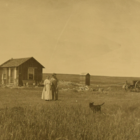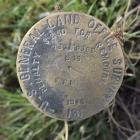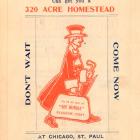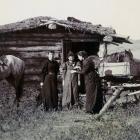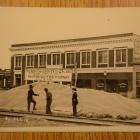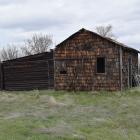Building
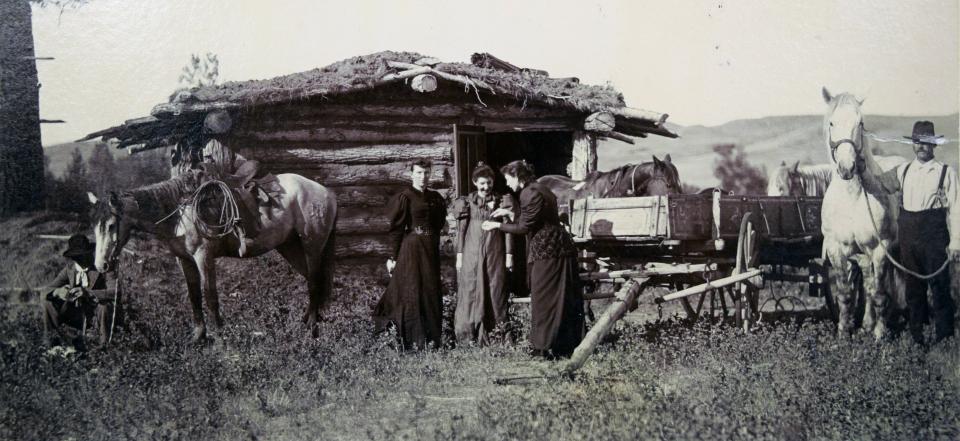
Homesteaders at Enright Ranch on Porcupine Creek. Unknown photographer, no date.
Homesteaders at Enright Ranch on Porcupine Creek. Unknown photographer, no date.
Courtesy of the Valley County Historical Society.
 This work is licensed under a Creative Commons Public Domain Mark 1.0 License.
This work is licensed under a Creative Commons Public Domain Mark 1.0 License.
Stearns worked in Glasgow to earn the cash that she needed to meet the General Land Office’s requirements of five years’ residency on the land, constructing a dwelling, and cultivating farm crops. By May 1913 she had accumulated enough money to build a house on the northeast corner of her claim. Like many other women homesteaders (an estimated 15 percent of the total), Stearns cobbled together the resources for improving her tract—hiring out construction, laboring with her son on the farm, and piecing together domestic work to raise funds for improving her property.
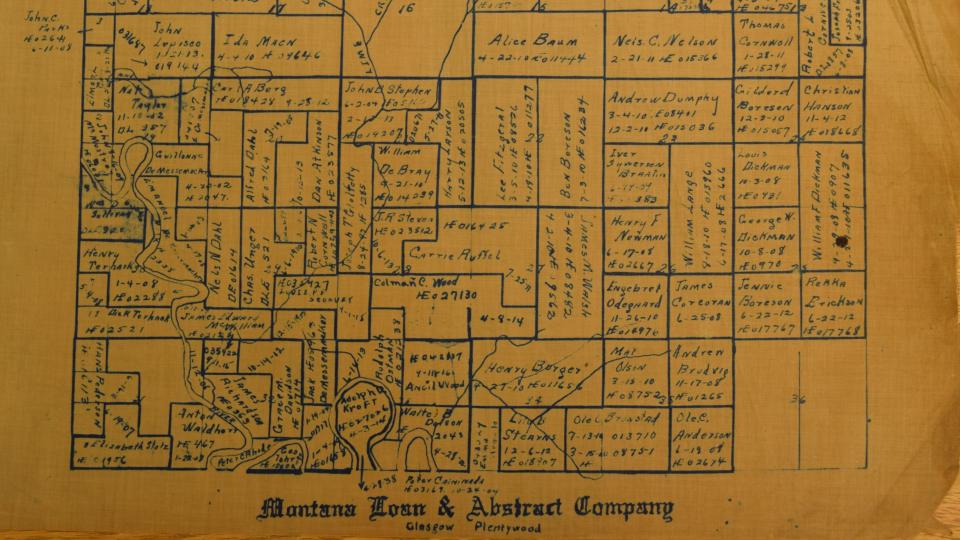
Early land ownership plat map, with Lily Stearns’s original quarter-section in the center, bottom row. The Milk River winds its way through the bottom left quarter of the map. Donated to the Valley County Historical Museum by Charles Brocksmith and E. T. Peterson.
Early land ownership plat map, with Lily Stearns’s original quarter-section in the center, bottom row. The Milk River winds its way through the bottom left quarter of the map. Donated to the Valley County Historical Museum by Charles Brocksmith and E. T. Peterson.
Courtesy Valley County Historical Museum.
 This work is licensed under a Creative Commons Public Domain Mark 1.0 License.
This work is licensed under a Creative Commons Public Domain Mark 1.0 License.
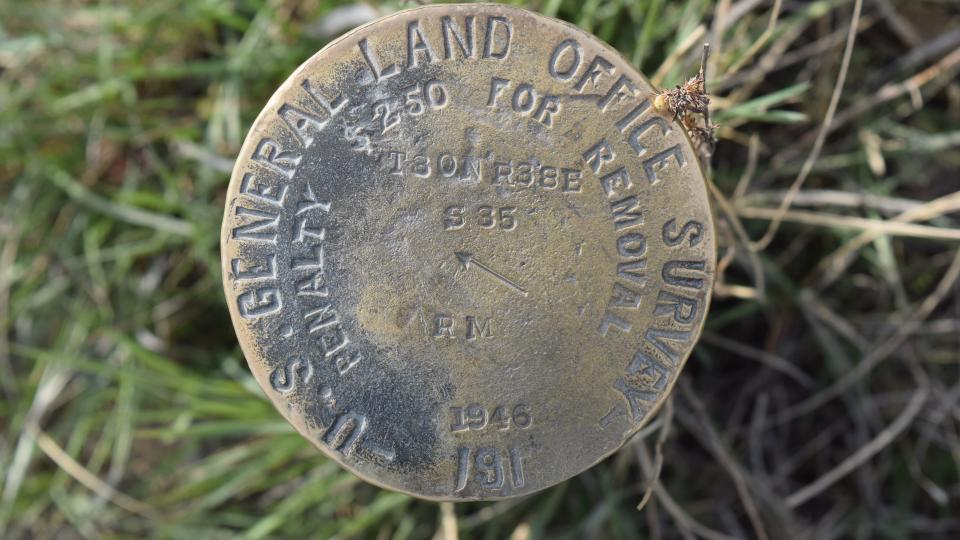
GLO surveyors worked to make the Western landscape legible to the state, and laid corner markers across the public domain. General Land Office corner marker, Stearns claim, Township 30 N Range 38 E, Section 34. Photograph by Sara Gregg, 2019.
GLO surveyors worked to make the Western landscape legible to the state, and laid corner markers across the public domain. General Land Office corner marker, Stearns claim, Township 30 N Range 38 E, Section 34. Photograph by Sara Gregg, 2019.
Sara Gregg, 2019.
 This work is licensed under a Creative Commons Attribution 4.0 International License.
This work is licensed under a Creative Commons Attribution 4.0 International License.
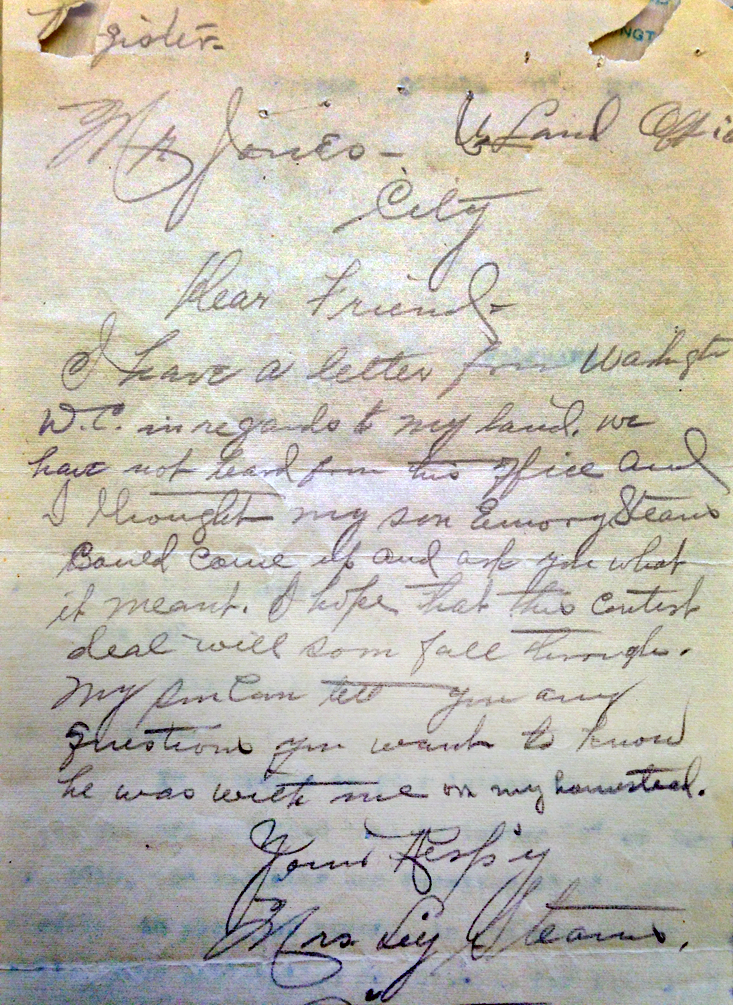
One of dozens of communications Lily Stearns mailed to federal officials. This letter to “Mr. Jones, U.S. Land Office, City,” 1914, inquired about the status of her claim.
One of dozens of communications Lily Stearns mailed to federal officials. This letter to “Mr. Jones, U.S. Land Office, City,” 1914, inquired about the status of her claim.
Courtesy of the Montana Historical Society Research Center.
 This work is licensed under a Creative Commons Public Domain Mark 1.0 License.
This work is licensed under a Creative Commons Public Domain Mark 1.0 License.
In spite of her best efforts, a litany of trials challenged Stearns’s resources and perseverance, and over the years this artful, persistent, and capital-poor homesteader filled pages with pencil-written pleas to the US Secretary of the Interior and other government officials. These letters stand out as exemplary within the vast archival records of the homestead movement for their expressions of aspiration and determination, nested among evocations of the challenges of an unfamiliar landscape. Stearns wrote plaintively but assertively, describing her struggles to far-away federal officials with a combination of despair and pride:
I am in so much trouble over this piece of land & you have restored and permited me to file on …. last april I hired a carpenter to build a shack 16 x 14, put 1 large window 1 small w-[window]. I lived there as much of the time as my means permitted me my son 18 & my baby 3…. I my self dug my well, I had my bed & beding and household articles & groceries there but my only means of support was laundry work.
Stearns’s hard-won improvements were ravaged two months later: “A terrable ciclone struck our neighbor hood…. My shack all the home I had was tetotlay destroyed, tore up, and smashed up—Gon all my groceries. Dishes were smashed.” In the following years, she continued to write to countless government officials as her fortunes ebbed and flowed alongside commodity prices, the punishing weather of the Great Plains, and ostracization by the neighbors surrounding her homestead.
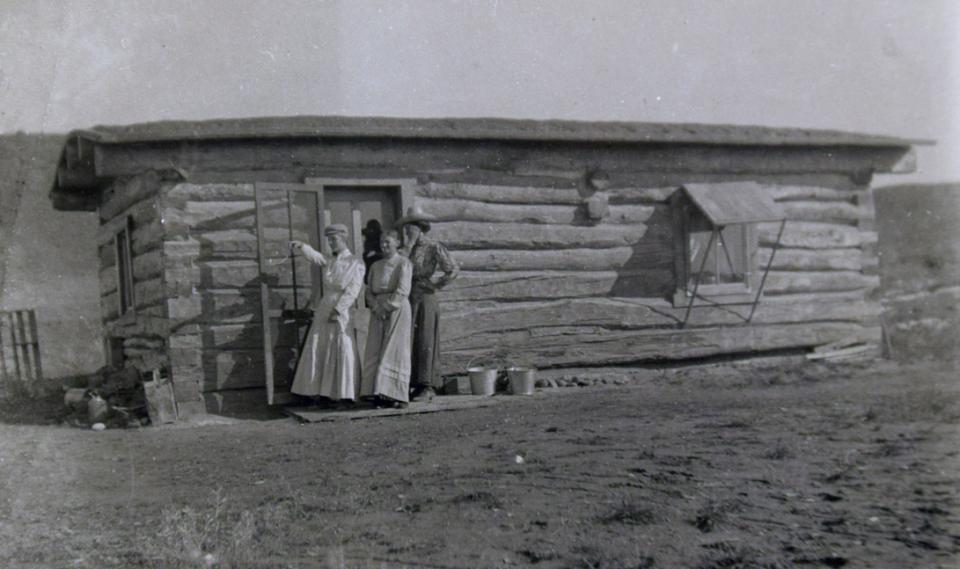
Three women at a homestead west of Lily’s claim. Unknown photographer, 1911.
Three women at a homestead west of Lily’s claim. Unknown photographer, 1911.
Courtesy of the Valley County Historical Society.
The original caption reads: “Mother, Elsie, and Emma, September 26, 1911.”
 This work is licensed under a Creative Commons Public Domain Mark 1.0 License.
This work is licensed under a Creative Commons Public Domain Mark 1.0 License.



